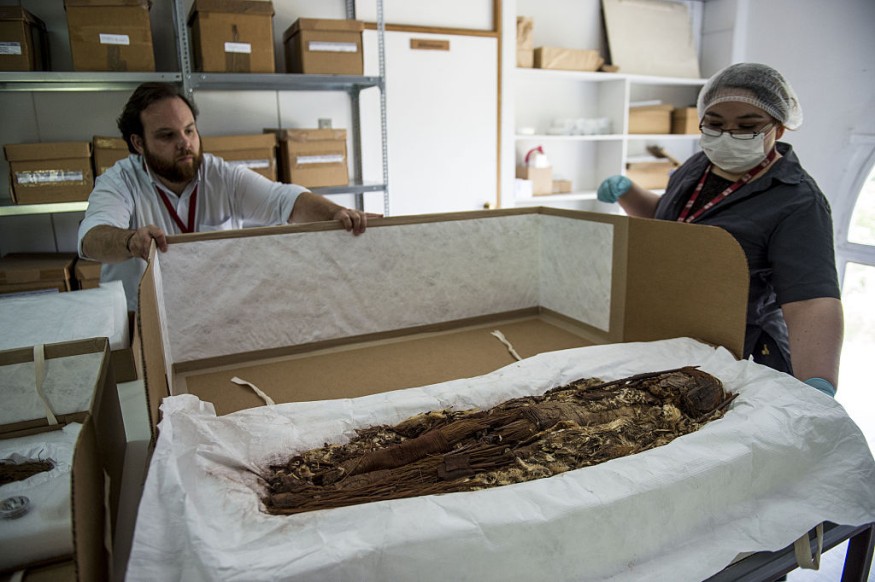According to recent research, 8,000-year-old human bones discovered in Portugal might be the oldest evidence of mummification. Researchers investigated the photographs of 13 human skeletons unearthed in the Sado Valley, Portugal, in the early 1960s.
The findings have recently been published in the European Journal of Archaeology.
Investigating Ancient Remains

They were able to rebuild the burial placements of the remains, offering a "once-in-a-lifetime chance" to learn more about 8,000 year-old funerary procedures.
According to the research, some remains were discovered buried in bent, compressed configurations, with the legs flexed at the knees and put in front of the torso.
History of Mummies
According to the scientists, some individuals may have been mummified before burial for reasons "related to their curation and transit."
The Chinchorro mummies of northern Chile, which date back 7,000 years, had been the world's oldest mummies.
According to previous research, the ancient Egyptians were embalming mummies up to 5,700 years ago.
According to a new study, Sado Valley was the site of the first known mummification processes. To put it another way, the Sado Valley remains are regarded to be the first known mummified human bodies.
However, the Sado Valley remains are no longer mummified since soft tissue is no longer maintained and the bodies are skeletonized.
A mummy is a deceased person or animal who has had its soft tissues and organs preserved. The majority of surviving mummies are younger, ranging from a few hundred years to 4,000 years.
Comprehensive Study
Archaeologists from Uppsala University and Linnaeus University in Sweden, and the University of Lisbon in Portugal undertook the new research.
The results were based on photographs found in Portuguese archaeologist Manuel Farinha dos Santos (1923-2001).
'Three rolls of film from the excavation of two Mesolithic burial sites in the Sado Valley in south-western Portugal emerged a few years ago,' they reported
'Both sites, Arapouco and Poças de S., are located in the state of Arapouco. Bento was excavated in the 1960s and again in the 1980s and 2010s, with most human graves investigated and published.
'However, images of burials discovered between 1960 and 1962 were missing, and documentation was lacking.
'The recovery of these photos thus gave a once-in-a-lifetime chance to add to our understanding of Mesolithic funeral customs,' says the researcher.
Also Read : Between Denisovans and Homo Sapiens, Experts Debate on Who Settles Permanently on the Tibetan Plateau First
An Interesting Mummification
The team describes the task of determining whether a body was preserved by mummification when soft tissue is no longer evident as "difficult."
Soft tissue, unlike bone, is uncommon in archaeological sites due to preservation challenges - notably in temperate and wetter regions like Europe.
.In the 1960s, the skeletal remains of 13 people were discovered in Mesolithic shell middens - the leftovers of meals consumed long ago.'
Shell middens are mostly discarded shells and bone and plant remnants, ash, and charcoal. They also have indications of previous hunting, collecting, and food preparation.
The research used a technique known as 'archaeothanatology,' which combines observations of the geographical distribution of bones in the cemetery with knowledge of how the human body decomposes after death.
Even though thousands of years have gone by, archaeologists can recreate how the deceased corpse was handled after death and buried.
The results of human decomposition studies on mummification and burial at Texas State University's Forensic Anthropology Research Facility were also used to inform archaeothanatology in this work.
Hyperflexion
Researchers discovered hyperflexion of the limbs, which occurs when a joint is flexed beyond its usual range of motion.
'The corpse must have been buried in this hyperflexed posture for hyperflexed positions to be present in a burial with preserved labile joint connections in unstable poses,' the researchers add.
'A hyperflexion of the whole body combined with a lack of disarticulation or indications of in situ bone movement... As a result, it's a powerful taphonomic sign of mummified burial.'
There was also no 'disarticulation,' or amputation of a limb through a joint without breaking bone, in substantial portions of the skeleton, as well as fast sediment infilling around the bones.
The bones generally disarticulate at weak joints, such as the foot, during decomposition, but the articulations were preserved in these cases.
This pattern of hyperflexion and absence of disarticulation, according to the researchers, may be explained if the body was not deposited in the tomb as a fresh corpse but rather as a mummied corpse in a dehydrated state.
Manipulating the Corpse
The manipulation of the corpse during mummification would have taken over years, with the body progressively being desiccated to retain its 'bodily integrity.'
It would have also been compressed into a desirable posture by trussing with rope or bandages simultaneously.
The body would have been simpler to transport once the procedure was completed (it would have been more contracted and substantially lighter). It would have been buried with its appearance and anatomical integrity preserved.
The researchers find that mummification of the corpses was more frequent in prehistory than previously thought.
Related Article : Evidences of "Modern Culture" Dating 40,000 Years Discovered in China
For more prehistoric news, don't forget to follow Nature World News!
© 2025 NatureWorldNews.com All rights reserved. Do not reproduce without permission.





